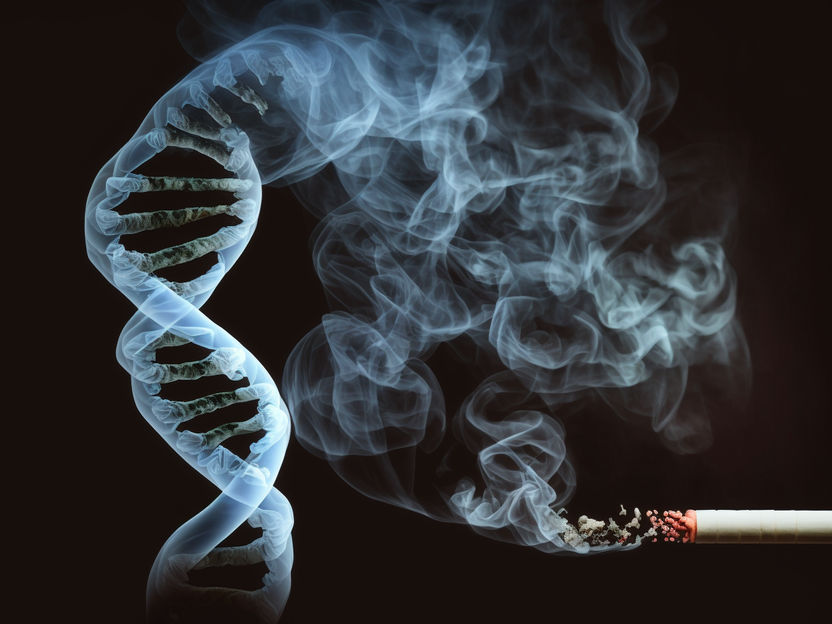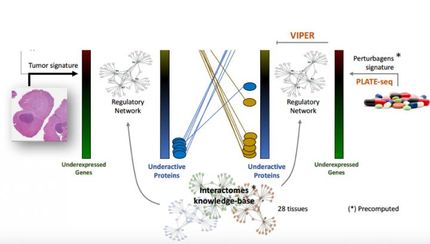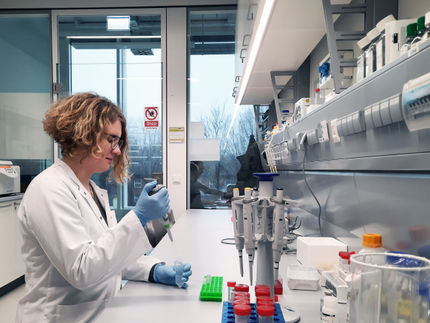Where do toxins from tobacco attack DNA?
In the future, this could make it easier than ever to determine the safety of many chemical substances
Advertisement
It is known that toxins in tobacco smoke can change our DNA – but where exactly in the genome they do this has been a mystery. A new approach developed by researchers at ETH Zurich now brings light into the darkness. In the future, this could make it easier than ever to determine the safety of many chemical substances.

“Once we understand which chemicals cause which DNA changes, we’ll be able to go backwards as well and, for known genomic changes, determine which toxins are most likely to have contributed to them,” Sturla says (symbolic image).
Computer-generated image
Chemical compounds in tobacco smoke alter the DNA of lung cells in ways that can lead to cancer in the longer term. Researchers at ETH Zurich have now been able to precisely localise such changes for the first time. Their results are clear: the pattern of DNA changes they determined in cell culture experiments is consistent with known mutations in lung cancer.
While these results are not the first to show the link between cigarette smoking and lung cancer – this causal relationship has long been established – it is only now that scientists led by Shana Sturla, Professor of Toxicology at ETH Zurich, have been able to use their new method to map exactly which DNA building blocks are altered in the process. With this approach, it should one day also be possible to determine the effects of other toxins on cells – and doing so ought to be relatively easy using cell culture and molecular biological analyses. Up to now, such toxicological studies had to be carried out using laboratory animals.
In their study, which has now been published in the journal ACS Central Science the researchers focused on a specific chemical compound: benzopyrene. This is produced when tobacco is burned. When the compound enters the human body, it is converted into very specific metabolites that have long been known for their toxicity. The scientists took these benzopyrene metabolites and added them to lung cells, which they cultured in in the lab for their studies.
Changes as a precursor to mutations
It has been known for some time that benzopyrene metabolites react with the DNA building block guanine (the G among the building blocks often abbreviated as A, C, T and G) and change it in a process known as alkylation. Although there are repair mechanisms in the cells that can reverse this change, they are not effective in all cases. If a cell divides without first reversing the alkylation, a DNA mutation occurs at this site – and some of these mutations can cause cancer. It is also known that the carcinogenic effect of cigarette smoke is largely due to benzopyrene metabolites.
The ETH Zurich researchers now wanted to determine which guanines in the DNA the benzopyrene metabolites tend to alter, and in particular which of these changes also persist in the long term. To do this, they used antibodies that specifically bind altered guanines. Several methods helped the researchers to subsequently map these sites. In one of these methods, the scientists copy the strands of DNA in a similar way to a PCR reaction. Whenever the copying machinery reaches an altered guanine, it is blocked, and the copying process stops. Subsequent DNA sequencing allows the researchers to determine where this termination occurred – and thus to infer the location of the DNA alteration.
Examining a wide range of chemicals
Alkylation of guanine is just one of countless ways that toxins can alter DNA. The researchers now plan to adapt their approach so they can in the future map other DNA changes as well. This would have a number of applications: It would then be possible to analyse a wide range of chemical compounds using simple cell culture experiments to predict the risk that they will cause cancer. Moreover, it would be possible to study which cell types and which individual genetic predispositions are especially susceptible to DNA changes and thus to carcinogenic degeneration.
“Once we understand which chemicals cause which DNA changes, we’ll be able to go backwards as well and, for known genomic changes, determine which toxins are most likely to have contributed to them,” Sturla says.
What’s more, such tests can be used in fundamental research to find out how the characteristic mutational signatures in cancer cells come about in the first place. Ultimately, Sturla is thinking of using the approach to study not only chemical toxins but also DNA changes caused by environmental factors, by nutrition or by normal cell aging.
Original publication
Jiang Y, Mingard C, Huber SM, Takhaveev V, McKeague M, Kizaki S, Schneider M, Ziegler N, Hürlimann V, Hoeng J, Sierro N, Ivanov NV, Sturla SJ: Quantification and Mapping of Alkylation in the Human Genome Reveal Single Nucleotide Resolution Precursors of Mutational Signatures. ACS Central Science, 22. März 2023























































